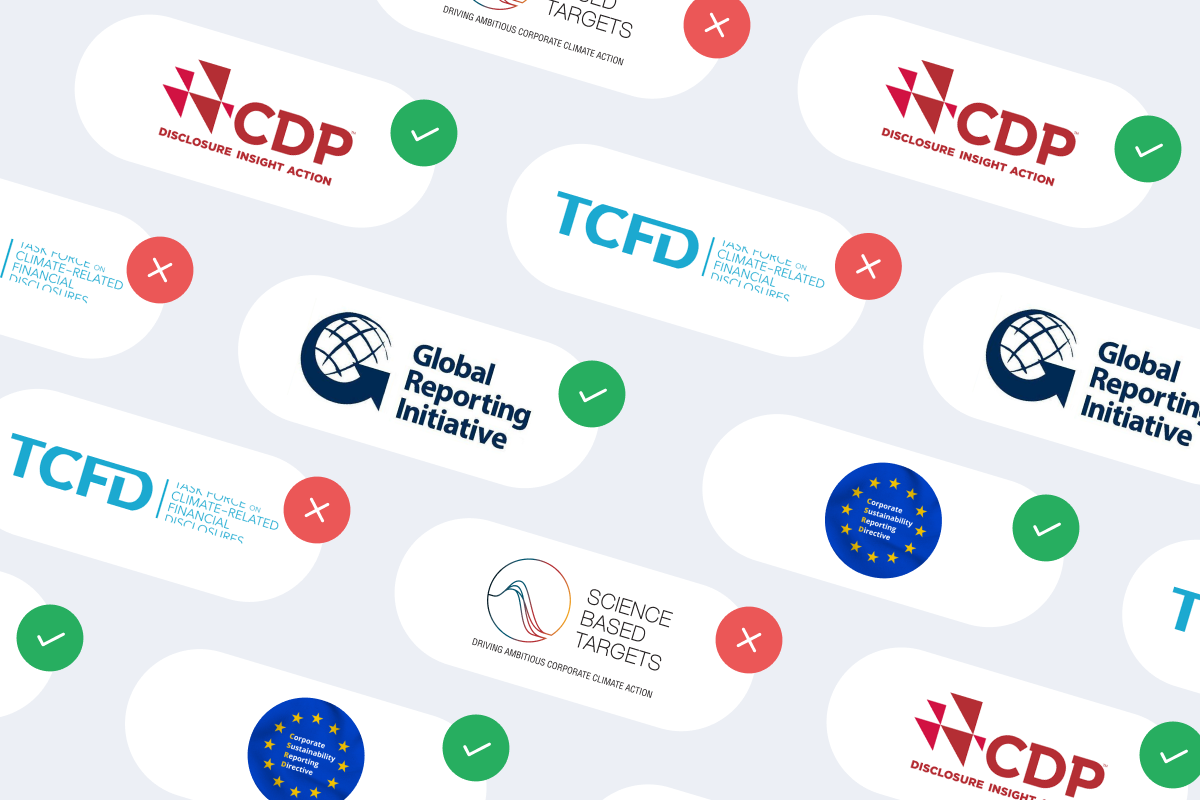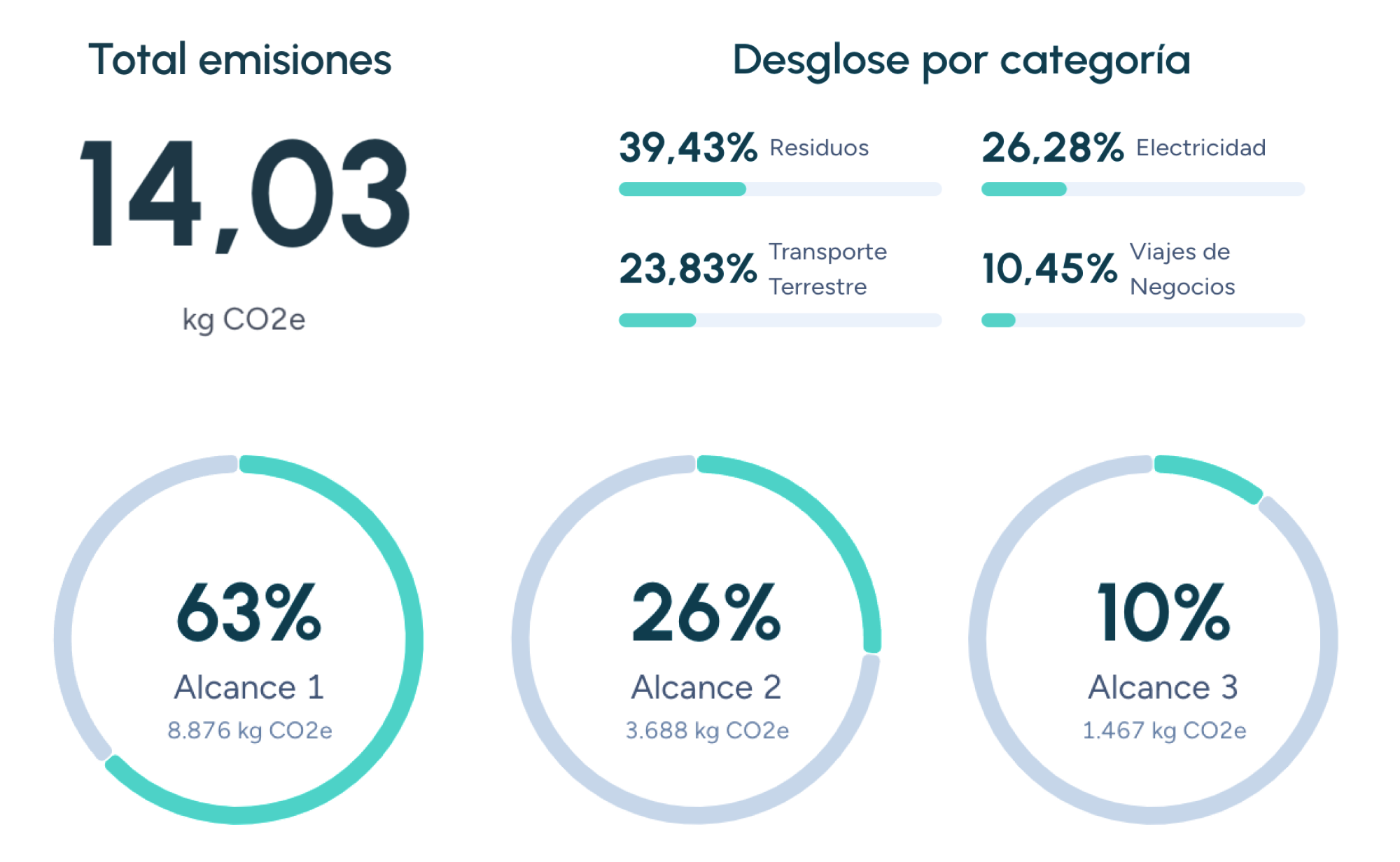G
GRI Standards
GRI Standards are a set of sustainability reporting guidelines developed by the Global Reporting Initiative (GRI). Founded in 1997, GRI is an independent international organization that provides the most widely used sustainability reporting framework worldwide. These standards offer a comprehensive and modular framework for organizations to measure and report their sustainability performance, including their carbon footprint. They provide a clear and concise structure, along with specific indicators, allowing companies to transparently and comparably communicate their environmental, social, and governance (ESG) impact.
Structure of the GRI Standards
The GRI Standards follow a modular structure that allows organizations to use them flexibly, adapting them to their specific needs. This structure consists of three main components:
- Universal principles: The Universal Principles establish the foundations for sustainability reporting, including defining report content and ensuring its quality. These principles are based on key concepts such as materiality, stakeholder inclusion, and comprehensiveness.
- Disclosure Standards: The disclosure standards provide specific indicators that organizations can use to report their performance in different thematic areas, including carbon footprint measurement. These standards are divided into three series:
- Series 200: Economic aspects
- Series 300: Environmental aspects
- Series 400: Social aspects
- Technical Guidance: The technical guidance offers practical advice on how to apply the GRI Standards, including examples of best practices and case studies. This guide is particularly useful for organizations new to sustainability reporting.
The importance of GRI Standards in carbon footprint measurement
GRI Standards play a crucial role in carbon footprint measurement and reporting, providing a standardized and internationally recognized framework. This allows companies to:
- Ensure consistent and comparable measurement: GRI Standards offer a clear and concise methodology for calculating carbon footprints, ensuring data consistency and comparability. This is essential for companies to evaluate their performance over time and compare it with other organizations.
- Enhance transparency and credibility: By using GRI Standards, companies demonstrate their commitment to transparency and accountability in sustainability. Reports based on these standards are more reliable and credible to stakeholders, as they follow a recognized framework and can be audited by third parties.
- Drive continuous improvement: GRI Standards promote continuous improvement by providing companies with a framework to identify their environmental impacts, set reduction targets, and track progress. This enables them to develop more effective sustainability strategies and contribute to the fight against climate change.
How are GRI Standards used to measure carbon footprint?
To measure carbon footprint using GRI Standards, companies must follow a structured process that includes the following steps:
- Defining the scope: The first step is defining the measurement scope, that is, the greenhouse gas (GHG) emissions to be included in the calculation. GRI Standards recognize three scopes of emissions:
- Scope 1 emissions: Direct emissions from sources owned or controlled by the company.
- Scope 2 emissions: Indirect emissions from the generation of electricity, heat, or steam consumed by the company.
- Scope 3 emissions: Other indirect emissions occurring within the company’s value chain, such as those associated with business travel, goods transportation, or product usage.
- Data collection: Once the scope is defined, companies must collect accurate data on their GHG emissions. This may include data on energy consumption, vehicle emissions, business travel, and other relevant activities.
- Calculating emissions: GRI Standards provide specific emission factors to calculate GHG emissions associated with different activities. These factors are based on scientific data and are periodically updated to reflect the latest climate science advancements.
- Reporting results: Finally, companies must report their carbon footprint measurement results following GRI Standards requirements. This includes presenting detailed information on the measurement scope, the methodology used, the results obtained, and the actions taken to reduce emissions.
Companies that trust us

AWARE (Available Water Remaining)
AWARE is a Life Cycle Assessment (LCA) characterisation method that weights the impact of water consumption according to the residual water availability in the local basin.
B Corp Certification
B Corp Certification is a global standard that validates companies for their commitment to sustainability and social responsibility, promoting practices that reduce carbon footprints and create a positive impact on society and the environment.
CBAM: EU Carbon Border Adjustment Mechanism
Analyse how the EU taxes imports according to their carbon footprint, the sectors affected, and the steps companies must take to prepare for 2026.
Guiding businesses towards net-zero emissions through AI-driven solutions.
© 2025 Manglai. All rights reserved
Política de Privacidad


